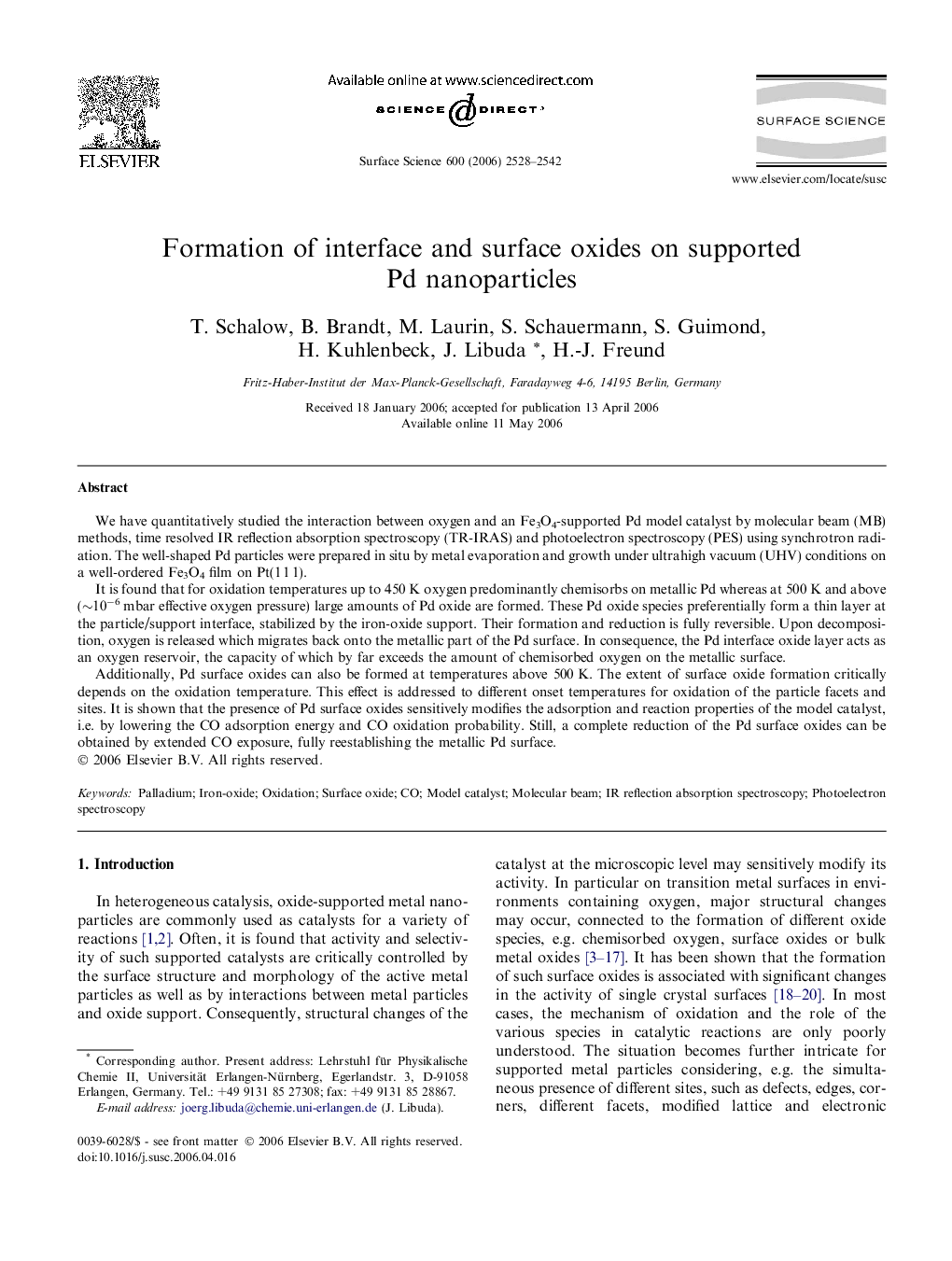| Article ID | Journal | Published Year | Pages | File Type |
|---|---|---|---|---|
| 5426830 | Surface Science | 2006 | 15 Pages |
We have quantitatively studied the interaction between oxygen and an Fe3O4-supported Pd model catalyst by molecular beam (MB) methods, time resolved IR reflection absorption spectroscopy (TR-IRAS) and photoelectron spectroscopy (PES) using synchrotron radiation. The well-shaped Pd particles were prepared in situ by metal evaporation and growth under ultrahigh vacuum (UHV) conditions on a well-ordered Fe3O4 film on Pt(1Â 1Â 1).It is found that for oxidation temperatures up to 450Â K oxygen predominantly chemisorbs on metallic Pd whereas at 500Â K and above (â¼10â6Â mbar effective oxygen pressure) large amounts of Pd oxide are formed. These Pd oxide species preferentially form a thin layer at the particle/support interface, stabilized by the iron-oxide support. Their formation and reduction is fully reversible. Upon decomposition, oxygen is released which migrates back onto the metallic part of the Pd surface. In consequence, the Pd interface oxide layer acts as an oxygen reservoir, the capacity of which by far exceeds the amount of chemisorbed oxygen on the metallic surface.Additionally, Pd surface oxides can also be formed at temperatures above 500Â K. The extent of surface oxide formation critically depends on the oxidation temperature. This effect is addressed to different onset temperatures for oxidation of the particle facets and sites. It is shown that the presence of Pd surface oxides sensitively modifies the adsorption and reaction properties of the model catalyst, i.e. by lowering the CO adsorption energy and CO oxidation probability. Still, a complete reduction of the Pd surface oxides can be obtained by extended CO exposure, fully reestablishing the metallic Pd surface.
